Want to hear the story of how I set up a 26-year-old computer to be used as a demo PC at a gamedev event? Read on!
Hi everyone! As you may already know, for the past few months I’ve been working on a Game Boy game with a friend: OIOPOLIS! The demo has already been out for a few weeks (go play it online on itch.io! It’s free!) and it was also showcased publicly during Indie Dev Day, an indie videogame event at Barcelona, a couple of weeks ago.
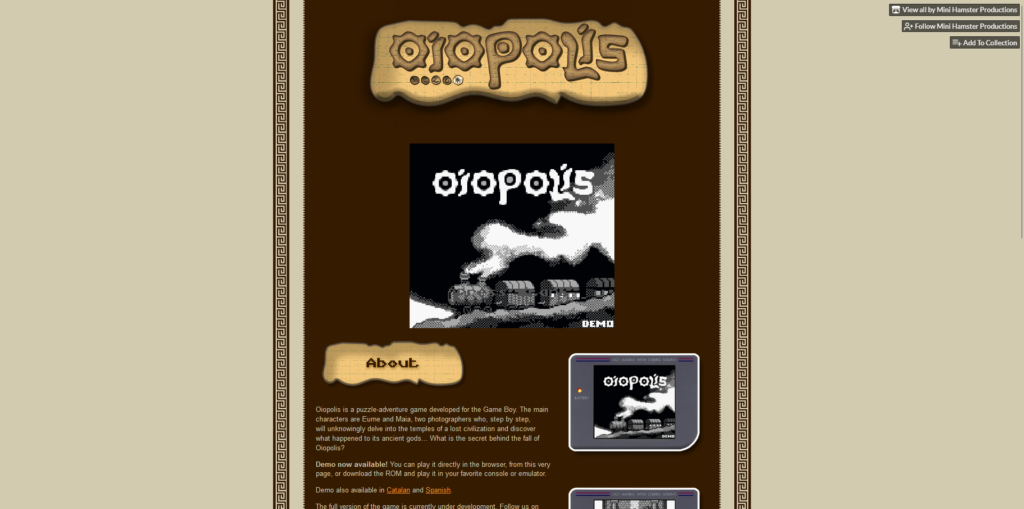
Of course, being a computer nerd and a fan of obsolete technology, as we were preparing for the event, I just had to go and think: “Hey, what if we take an actual old-school laptop from the Game Boy era and put our game on it?!”. We already knew we were going to have a real Game Boy for people to play the demo, but we also wanted it emulated on a bigger screen.
However… why use a boring modern laptop or tablet, when we could use this? (read on…)
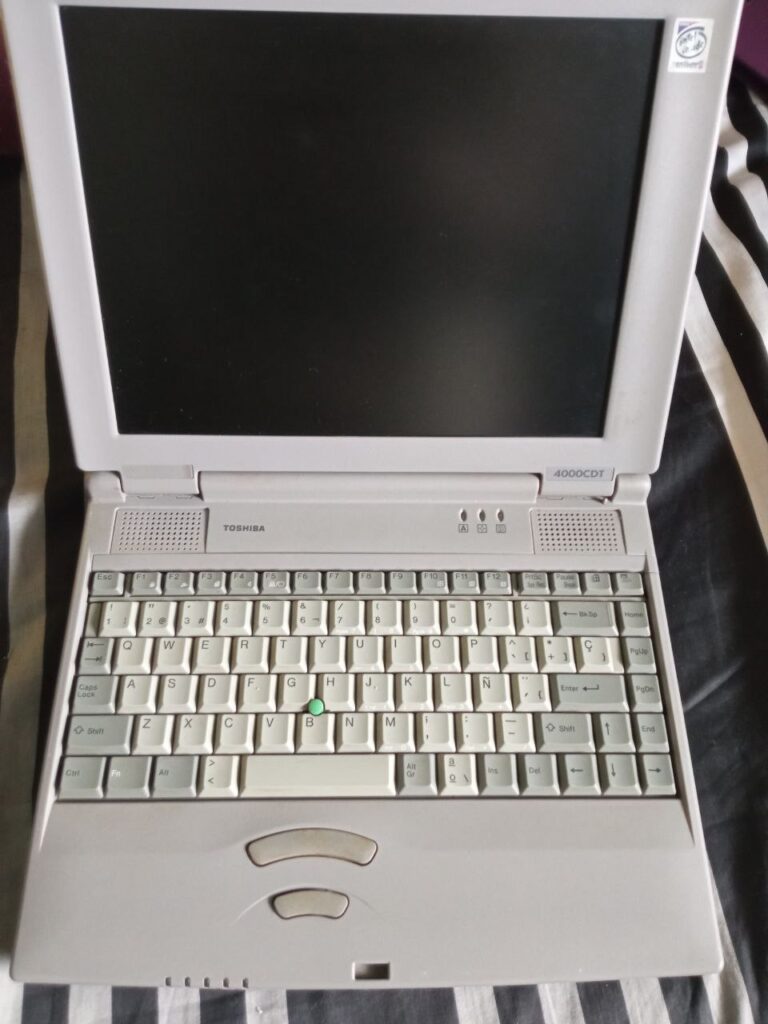

This is a Toshiba Satellite 4000CDT from 1997. It’s the oldest working laptop I own, got it for like 15 euros a few years ago in a flea market. The woman who sold it to me was its original owner – they’d had it in the family for decades and didn’t want it anymore, since it was more than obsolete at that point.
Normal people wouldn’t know what to do with this kind of machine – but I’m not normal, so I was more than happy to help her get rid of it.
As far as retro computing goes, this PC is not that old, but it’s of a pretty respectable age already, particularly for a laptop. It’s a Pentium II running a single core at a speed of 233MHz. Mine boasts the maximum RAM available at the time for this model, a grand total of 160mb of memory. How modern.
When I bought it, it ran well and it had Windows 98 installed. However, not too short afterwards, the OS wasn’t detected anymore and it wouldn’t boot. At the time I believed it was my fault, that I had corrupted the system somehow, and had planned on reinstalling it but kept forgetting. Showcasing our demo was the perfect excuse to dig at it again, find the issue and fix it.
Want to hear the story of how I fixed it? Keep reading.
So, to begin with, I downloaded a Windows 98 OEM iso, burned it on a CD and put it on the Toshiba. Immediately, I was met with this warning.
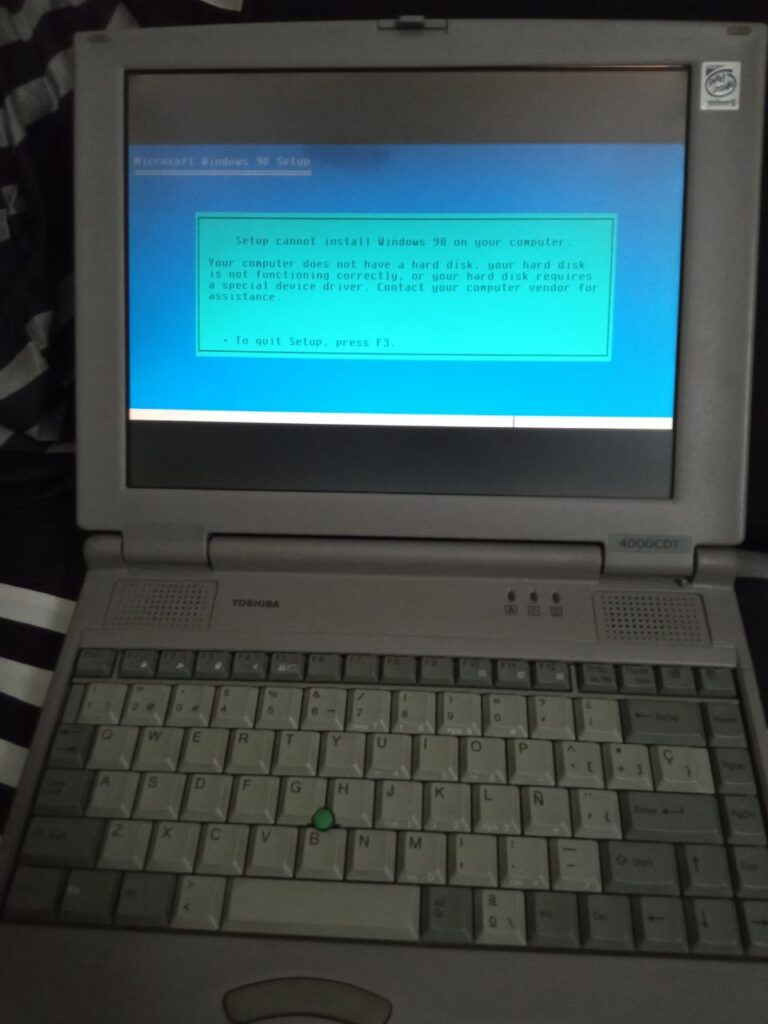
The first thing I did was check if the hard drive was seated and connected properly, and it was; so the second most logical conclusion was that the drive was dead.
I took it out of the machine. It was very cute: a 4099mb drive (that’s 4 whole gigs, woah) that had finally met its demise. How tragic.
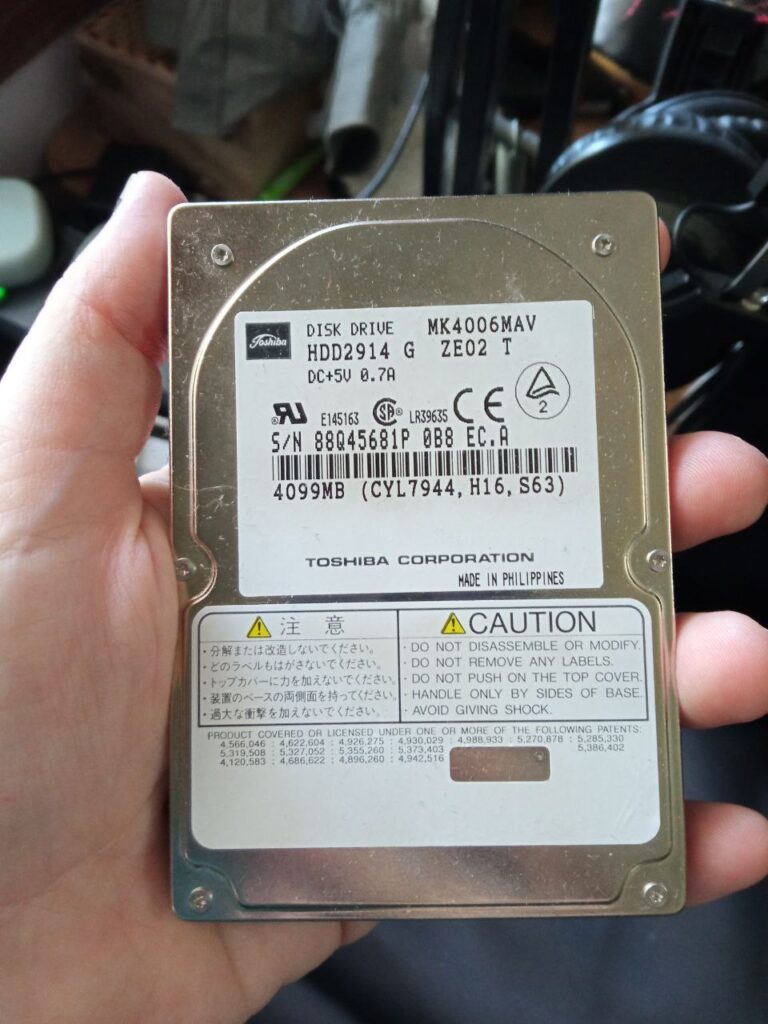
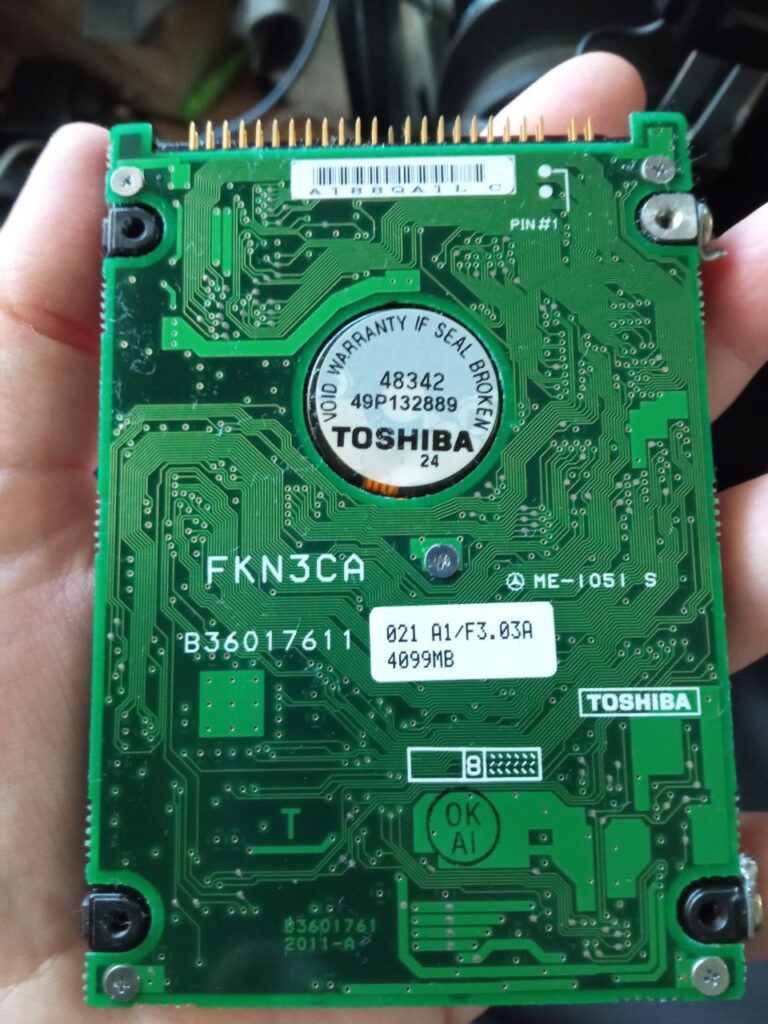
I replaced it with a spare ATA HDD I had lying around, a 40gb one. It felt sacrilegious to put such a “huge” drive on such an old machine, but hey, now I can install Windows 98 100 times on it, or maybe 1000 MS-DOS games or something.
The warning was gone. Hooray! The setup program checked the drive for errors and found none, and successfully wiped the drive clean. However… when the time came to actually install the system, my luck ran out, and I was met with this black screen of death.

It could mean a number of things, according to the Internet. I didn’t feel like trying out all the possible fixes, so instead I resorted to a valuable, ancient family heirloom: our original Spanish Windows 98 Second Edition installation CD and its corresponding manual, which we have (for some reason) kept safe for the past 20-something years!
And so I put the CD into the bay, and prayed to the computing gods, and they must have listened, because the installation finished with no issues. Hooray!
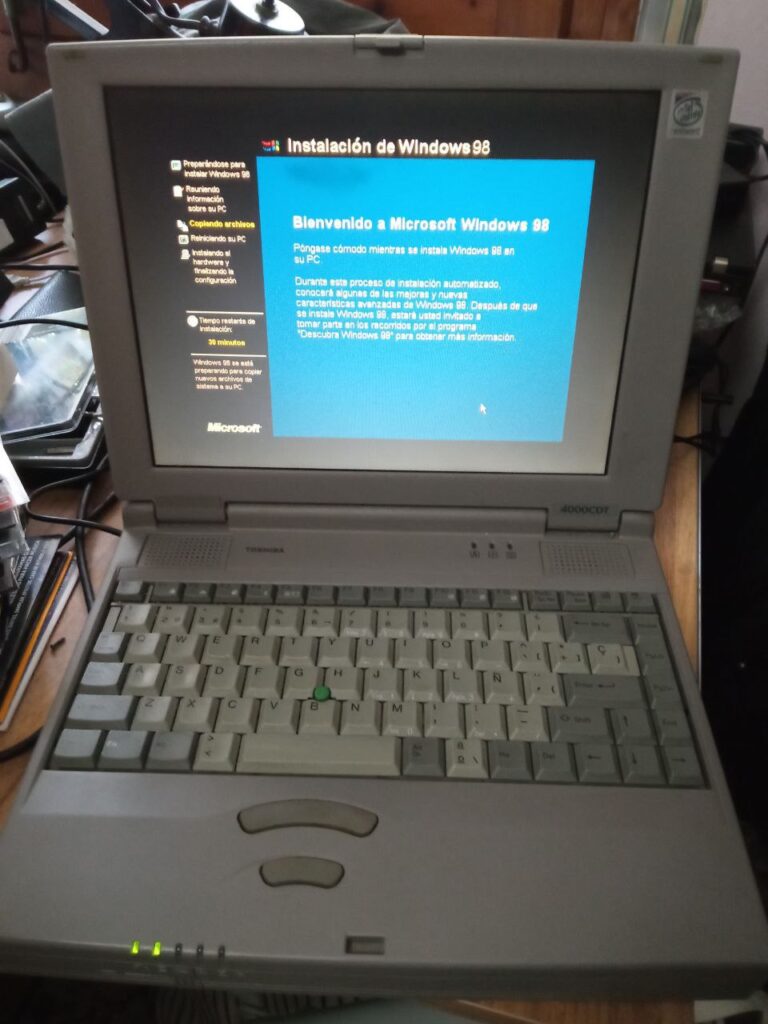
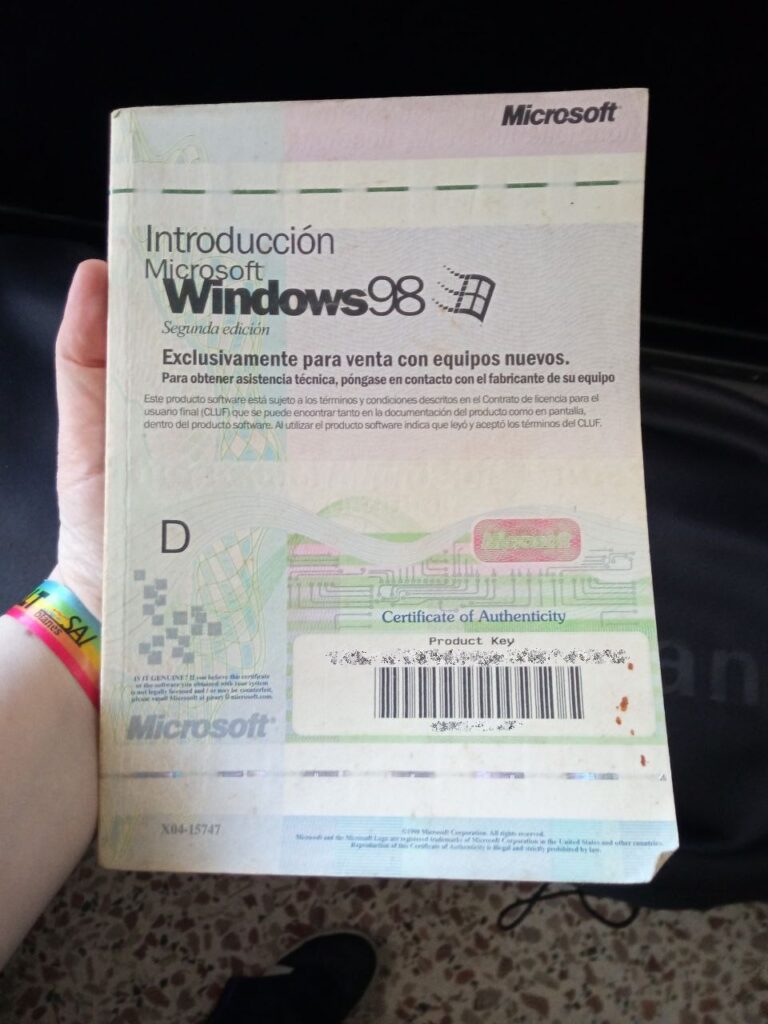


I felt very accomplished when I entered the original serial into the machine. Modern DRM has nothing on this. Can you imagine a digital product that you buy today, still being usable 20+ years in the future, without needing to buy it again or resort to workarounds and/or piracy to run it?
I can’t, because that isn’t going to happen.
So my 25-year-old Toshiba was fully working again! Yay! A trip straight back to my childhood (I’m thirty, my first PC ran Windows 98, that bootup sound is etched into my brain).
But… could it run a Game Boy game? I knew that Windows 98 as a system was perfectly capable of it, but this computer was… limited, to say the least, with basically no graphics card to speak of. So could it?

My first go-to program was bgb, a reliable Game Boy emulator that’s been around for decades and (apparently) supports Win 98. And it did run the game, as you can see! Very reliably. And, unfortunately, with an abysmal frame rate that made it unplayable.
I tried several other emulators next. I soon came to the conclusion that my best option would be an MS-DOS Game Boy emulator, since Windows 98 can run MS-DOS apps natively with no issues, and they tend to be much lighter and well optimized.
One of the emulators I tried was no$gmb, another pretty popular software from back in the day. And it did run the game OK, with a decent framerate. However, the music emulation was totally unreliable: some tracks sounded like they came out of a creepypasta nightmare. So I had to rule it out.
Eventually, I settled for the MS-DOS version of an emulator called kiGB. The framerate was choppy at first, but it stabilized once I set up a low frameskip (which actually makes the game look more like it’s played on a real Game Boy, with the ever-present ghosting, so I like it).
Everything ran and looked OK, and I could even set up the program with a custom Super Game-Boy style frame, like bgb. Very cool!
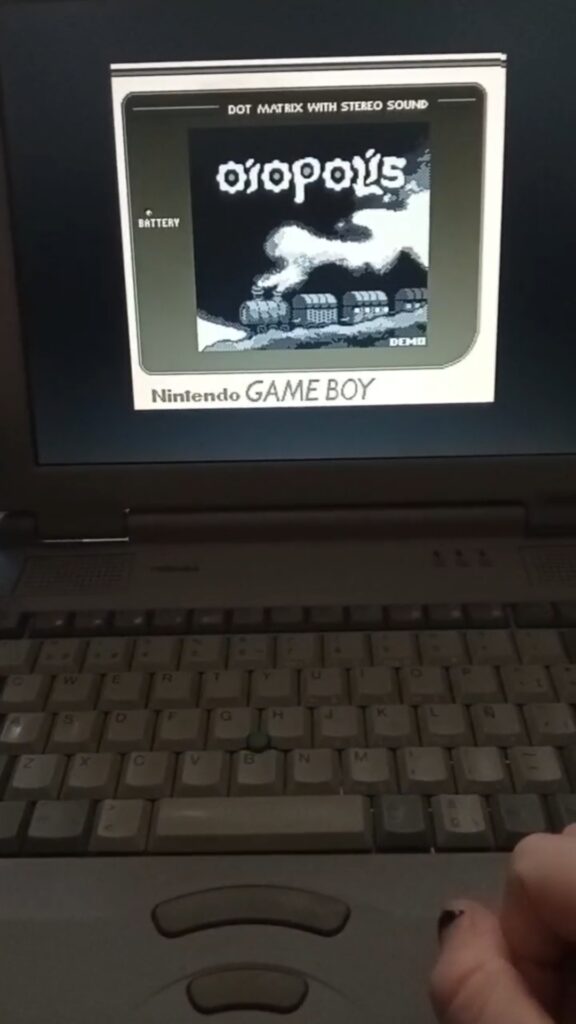
The only issue with kiGB is that its internal clock-speed, at least in the version I tried, is slightly off compared to the original hardware: it runs a bit slower, so the music also plays lower, almost unnoticeably so. However, I found it acceptable for our needs.
And there it was! My dear Toshiba Satellite 4000CDT sitting in our booth, and actual people playing on it! Everything went butter smooth. I actually brought a spare laptop with me in case the Toshiba died on us during the event, but it didn’t. This thing is sturdy (and it also weights a ton. My back still hurts after carrying it around on my backpack, ouch).

So that’s the story. I found it very fun and almost poetic to showcase our Game Boy game, made in 2023, on a machine from 1997, the same year that the Game Boy Pocket came out. Don’t you?
I hope I can find more interesting and creative uses for this laptop in the future. Let’s keep all of this technology alive for as long as possible!
Thanks for reading and until the next time,
pingudroid

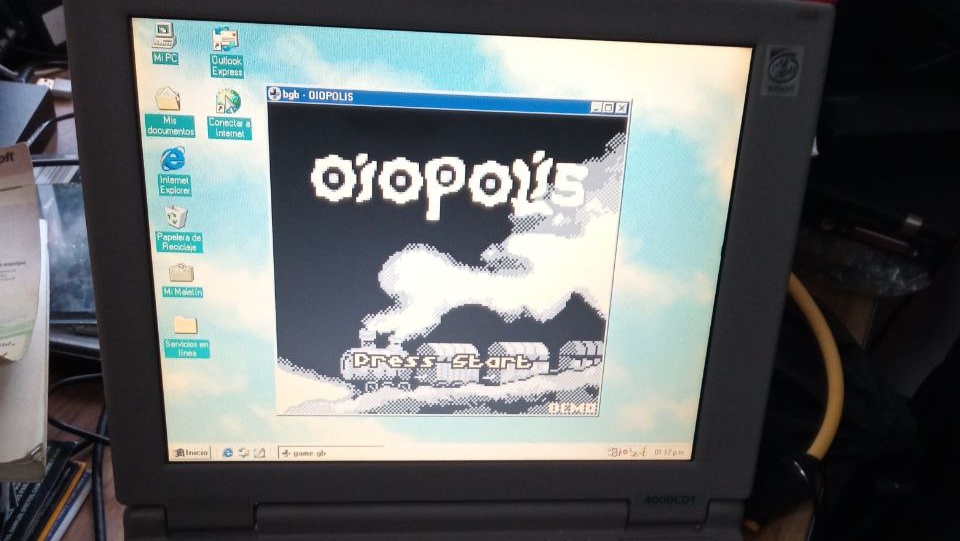
Leave a Reply